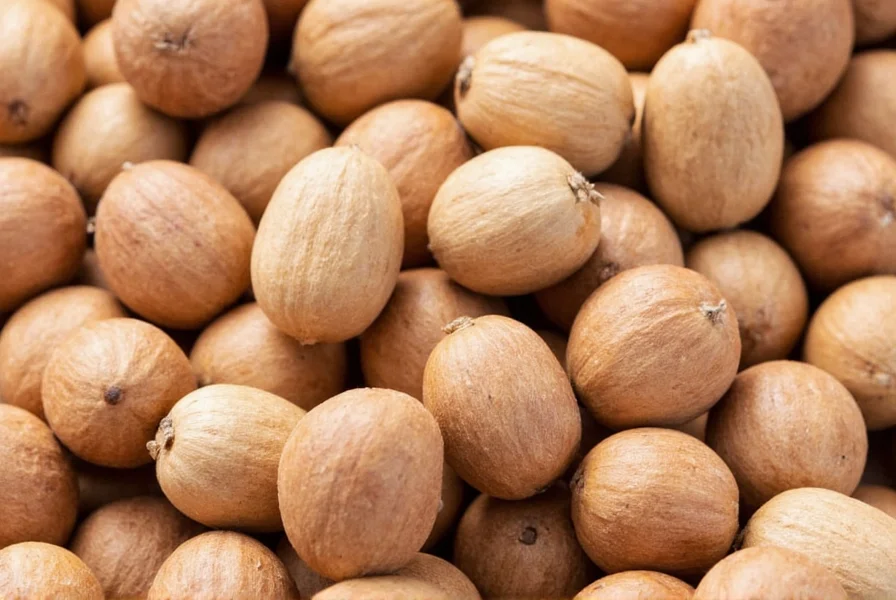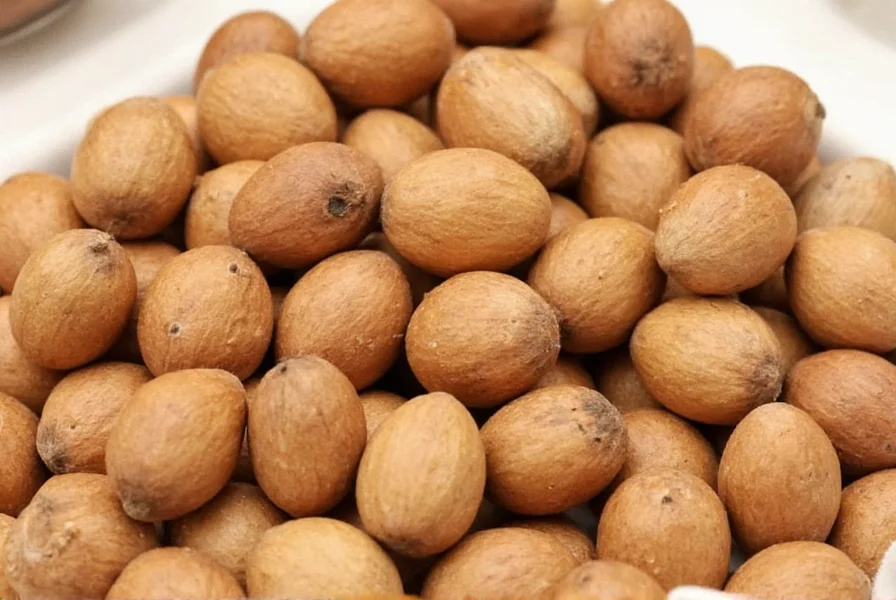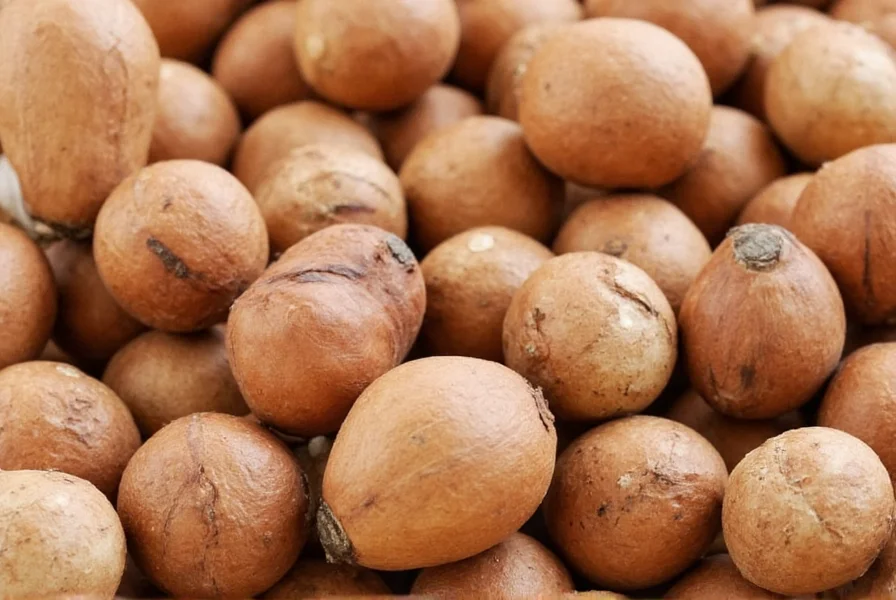Nutmegs represent one of the world's most distinctive spices with a rich history spanning centuries. The Myristica fragrans tree produces two separate spices from a single fruit: the seed kernel becomes nutmeg, while the lacy red covering surrounding it transforms into mace when dried. This botanical relationship often causes confusion among home cooks and culinary enthusiasts.
Botanical Origins and Characteristics
The Myristica fragrans tree grows up to 20 meters tall in tropical climates, primarily in Indonesia's Moluccas Islands, though cultivation has expanded to Grenada, India, Malaysia, and other equatorial regions. Each fruit resembles a small peach that splits open when ripe, revealing the valuable seed inside.
Nutmeg seeds measure approximately 2-3 cm in length and have a deep brown color with a distinctive oval shape. When freshly grated, they release a warm, sweet, slightly nutty aroma with subtle notes of clove and cinnamon. The essential oil content (around 7-14%) gives nutmeg its potent flavor profile and preservative qualities.
| Characteristic | Description |
|---|---|
| Scientific Name | Myristica fragrans |
| Origin | Banda Islands, Indonesia |
| Primary Growing Regions | Indonesia, Grenada, India, Malaysia |
| Harvest Method | Hand-picked when fruit splits open |
| Drying Process | Air-dried for 4-8 weeks |
The Nutmeg-Mace Relationship
Understanding what nutmegs are requires recognizing their relationship to mace. When the fruit ripens, it splits to reveal a crimson aril surrounding the seed. This aril becomes mace when dried, while the seed itself becomes nutmeg. Though derived from the same fruit, these spices have distinct flavor profiles: nutmeg offers warm sweetness, while mace provides more delicate, citrusy notes with higher potency.
Chefs often wonder about the difference between nutmeg and mace in recipes. While interchangeable in many applications, mace works better in lighter dishes where its subtlety won't be overwhelmed, while nutmeg stands up well in heartier preparations. This knowledge helps home cooks make informed decisions about what are nutmegs used for versus mace.

Historical Significance
Nutmegs held such value during the Age of Exploration that European powers waged wars to control their production. Dutch traders once maintained a monopoly by destroying excess trees and puncturing all nutmegs destined for market to prevent cultivation elsewhere. This historical context explains why understanding where does nutmeg come from remains relevant today.
The spice's preservative qualities made it invaluable before refrigeration, while its purported medicinal properties (some accurate, many exaggerated) contributed to its high demand. Traders would often mix ground nutmeg with cheaper fillers, leading to the preference for whole nutmeg that persists among discerning cooks.
Culinary Applications
Professional chefs consistently recommend using whole nutmeg rather than pre-ground versions to experience the full flavor profile. The volatile oils responsible for nutmeg's distinctive taste dissipate quickly after grinding. When considering how to use whole nutmeg, a fine grater or specialized nutmeg grinder yields the best results.
Nutmeg enhances both sweet and savory dishes across global cuisines:
- Béchamel and cheese sauces (classic in French and Italian cooking)
- Pumpkin pie and other fall desserts
- German potato dumplings and spinach dishes
- Indian garam masala and biryani preparations
- Dutch speculaas and other spiced cookies
When exploring what are nutmegs used for in traditional medicine, historical records show uses for digestive issues and as a sleep aid, though modern science supports only limited applications. The compound myristicin in high doses can be toxic, making moderation essential.
Selection and Storage Guidelines
Choosing quality nutmeg involves several factors that affect how to store nutmeg properly. Look for seeds that feel heavy for their size with no cracks or blemishes. When shaken, they should contain a loose kernel (indicating proper drying). Avoid any with musty odors or signs of mold.
For maximum shelf life, store whole nutmegs in an airtight container away from light and heat. Properly stored, they maintain peak flavor for 2-3 years, significantly longer than pre-ground versions which lose potency within 6 months. This longevity makes investing in whole nutmeg worthwhile for regular users.

Health Considerations
Nutmeg seed characteristics include several beneficial compounds, though moderation remains crucial. A quarter teaspoon contains approximately 12 calories, 1 gram of fiber, and notable amounts of manganese, copper, and magnesium. The spice also contains antioxidants like phenylpropenes.
While nutmeg in cooking applications is perfectly safe, consuming large quantities (more than 2 teaspoons) can cause myristicin toxicity, resulting in symptoms ranging from dizziness to hallucinations. This risk makes understanding proper usage amounts essential, particularly when considering nutmeg spice benefits versus potential risks.











 浙公网安备
33010002000092号
浙公网安备
33010002000092号 浙B2-20120091-4
浙B2-20120091-4